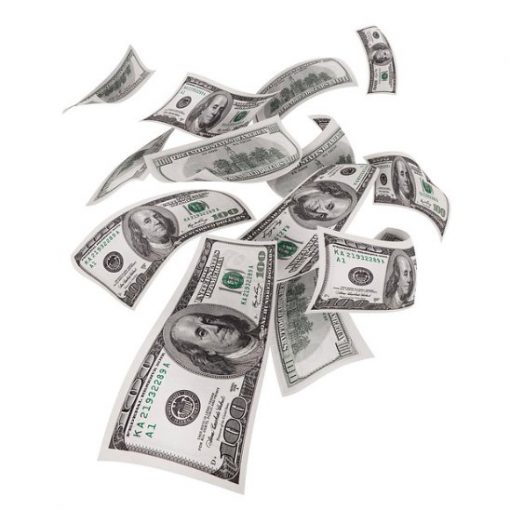Covestor models: Fortune’s Most Admired, StockDiagnostics, Best Ideas
Disclosure: Long BRK.B
I would much prefer to write about the stocks that I have purchased than those that I have sold. Accordingly, I will share some of my thinking underlying the addition of more shares of Berkshire Hathaway Class B (BRK.B), significantly raising this position to become by far the largest holding in the models. One of the attractions is that owning Berkshire will decrease portfolio turnover.
When I was employed at a hedge fund from 2001 until May 2009, I often shorted Berkshire to take advantage of perceived or predicted market weakness. That hedge fund was and still is largely attuned to fundamental value measures. Among those that we paid close attention to were: Price Earnings Ratios, Price to Sales Ratios and Price to Book Value Ratios.
Berkshire often looked expensive according to one or more of the ratios. The Price Book Ratio is a quick guide to the assets of the company in relation to the stock price. Berkshire owns 100% of some companies that are no longer publicly traded or have never been publicly traded.
Two companies come immediately to mind: Dairy Queen, and Shaw Industries (a carpet manufacturer based in Georgia). Most stocks typically trade at prices that are in excess of a one to one price to book ratio.
Buffett himself has expressed the opinion that the Price to Book ratio is not particularly meaningful as it applies to Berkshire because of the wholly owned companies in the portfolio and the long holding periods for most of the portfolio companies. Buffett’s mentor, Benjamin Graham, probably paid more attention to the Price Book Ratio than Buffett does.
Graham felt that if the difference between the intrinsic value of a company and its market price was great enough then a concept that Graham called the “Margin of Safety” became relevant. Buffett has often said that the best holding period is forever. When a stock is held forever, there is no taxable event created unless the company pays a dividend. Buffett does not prefer that his companies pay dividends, unless they can’t find a way to invest in growing the business with adequate returns.
It is ironic that the idea of taxing the wealthiest among us to a greater degree has been dubbed the “Buffett Tax”, since a key element in Buffett’s strategy is to avoid taxes so that the amount of capital at work is kept at its highest possible level. Indeed, Buffett is paid but a nominal salary which may be influenced by his desire to avoid paying taxes.
Essentially, investors in Berkshire have been getting Buffett’s investment expertise for nothing all these years. The prospect of finding a successor to Buffett has been a concern for many investors because Buffett was born on August 30, 1930.
For me, that concern has been answered with the recruiting of Todd Combs and Ted Weschler. “Todd Combs built a $1.75 billion portfolio (at cost) last year, and Ted Weschler will soon create one of similar size. Each of them receives 80% of their performance compensation from their own results and 20% from their partner’s,” according to the company’s 2011 annual report.
Buffett has enjoyed the benefit of the thinking of Charlie Munger (vice chairman of Berkshire) for many years. Munger is credited with influencing Buffett to purchase See’s Candy Shops in 1972. I believe that Buffett is encouraging the type of synergistic thinking that he and Munger have so successfully employed by rewarding Ted and Todd for the other’s results for 20% of their performance compensation.
Berkshire is beginning to perform relatively better than it did last year. That could be because some of its largest holdings are beginning to find more favor. One of them in which a 13% interest is held is American Express. Banks are another sector of the market that is acting well. Both Wells Fargo and US Bank are in the Berkshire portfolio.
Aside from the banks that are impacted to some degree by the vagaries of the housing market through mortgage lending and the household net worth of individual borrowers, Clayton Homes (manufactured housing) and Shaw Industries (carpeting) and Nebraska Furniture Mart are impacted by the brighter outlook for housing.
If the best holding period is forever, then some of Berkshire’s holdings are not going to be outperforming the market at any given time. Coca Cola (KO) might fall in that category, but it is worthy of mention because it epitomizes the mantra “Buy commodities, sell brands.” Other holdings that may turn out to be joggers rather than sprinters this year are Johnson & Johnson (JNJ), ConocoPhillips (COP), Kraft (KFT), and Proctor & Gamble (PG).
On the other hand, Wal-Mart (WMT) and IBM (IBM) are performing very well lately. This cursory overview of some of Berkshire’s holdings suggests that a large holding in BRK B does not jeopardize the diversification that many believe is necessary to insulate the portfolio from some of the risk in investing.
* All references to the holdings of BRK B are as of August 31.
Any investments discussed in this presentation are for illustrative purposes only and there is no assurance that the adviser will make any investments with the same or similar characteristics as any investments presented. The investments are presented for discussion purposes only and are not a reliable indicator of the performance or investment profile of any composite or client account. Further, the reader should not assume that any investments identified were or will be profitable or that any investment recommendations or that investment decisions we make in the future will be profitable.





